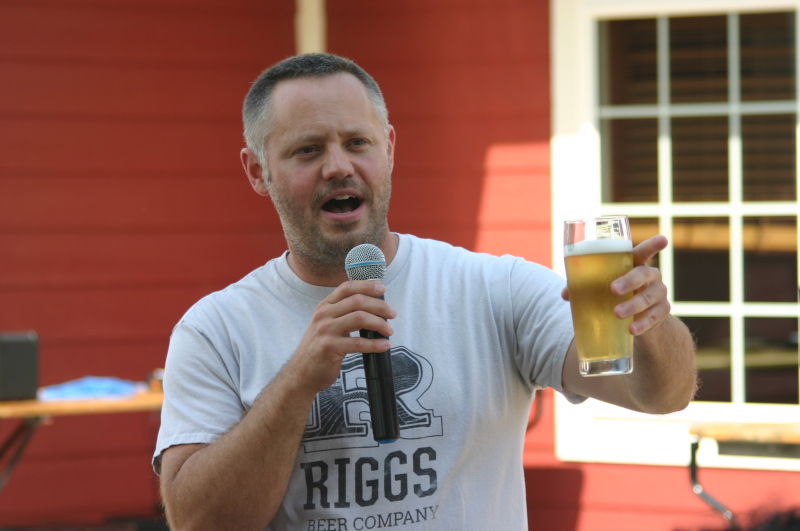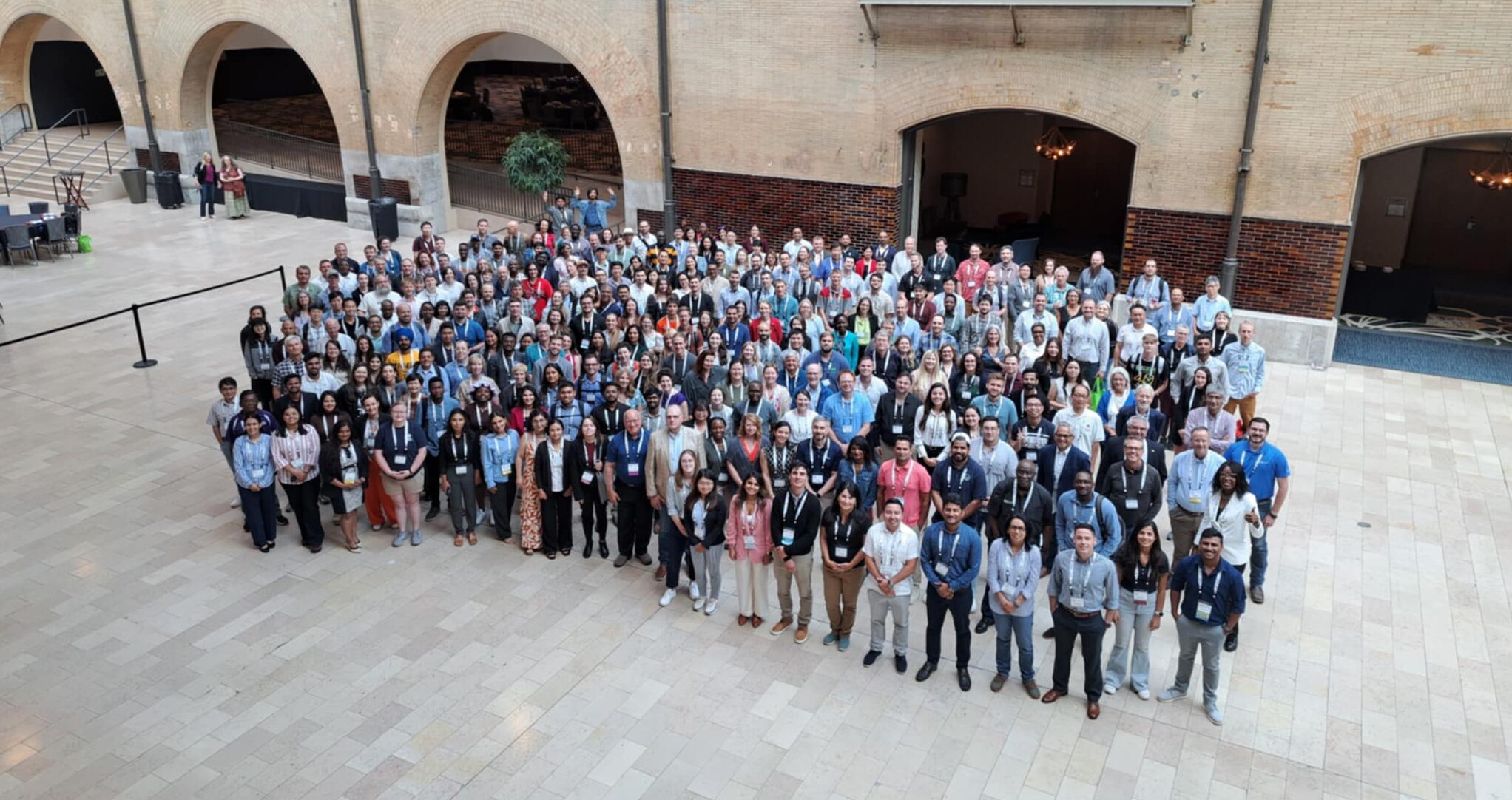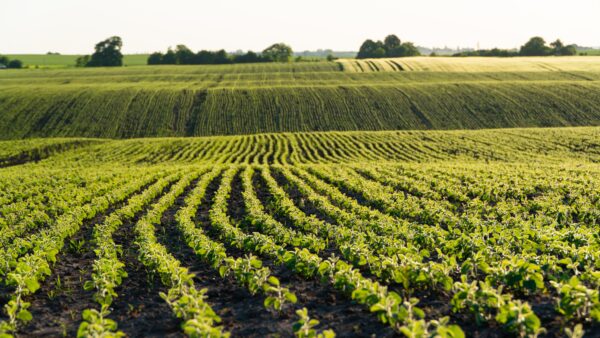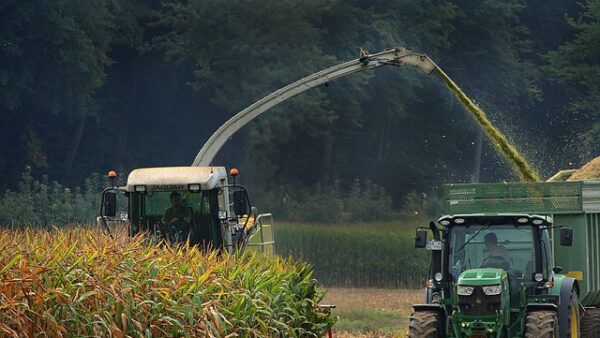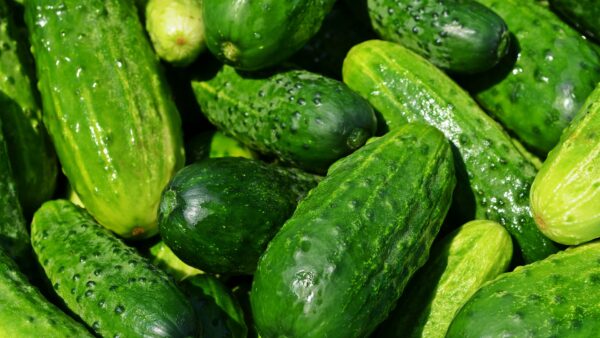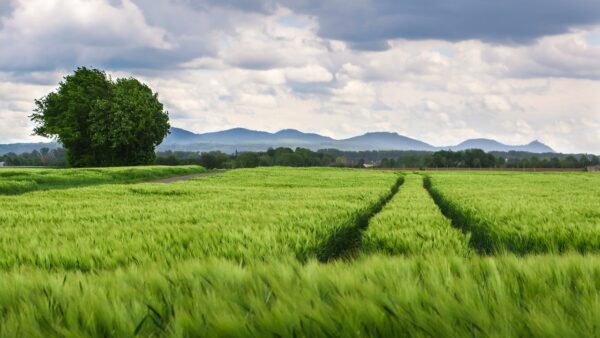Imagine this: you’re sipping on an American lager, savoring its crisp, clean taste. Little do you know, the journey of that beer started over 150 years ago in the fields of the University of Illinois.
This isn’t just any corn used in the beer from Riggs Beer Company in Urbana, IL; it’s the product of one of the longest-running breeding experiments in history, a direct descendant of Darwin’s ideas on natural selection.
Attendees of the National Association for Plant Breeding (NAPB) meeting heard the story today during a day-long tour of the University of Illinois Urbana-Champaign’s corn breeding program led by Professor Martin Bohn, who helped organize this year’s NAPB meeting.
Shortly after Darwin published On the Origin of Species, researchers at the University of Illinois Urbana-Champaign embarked on a mission. They began experimenting with a white corn variety from a local farm, selectively breeding it for high and low oil and protein concentrations. Over time, they produced four distinct corn varieties, each with unique traits.
Enter Professor Steve Moose, director of the Corn Functional Genomics Lab and a professor of crop sciences at the university.
“The corn used in our American lagers is a result of this long-term breeding experiment, really guided by his expertise. The low-oil corn variety they developed has found a perfect home in our brewing process, solving a crucial problem for us,” explained Matt Riggs, who operates the brewpub along with brother Darin.
Oil is the enemy of beer. It compromises foam stability, shelf life, and overall quality due to oxidative reactions, he explains.
“Large brewers typically remove the germ from corn grits or use corn syrup to avoid these issues. However, a simple Google search led us to the Illinois breeding experiment and its low oil corn variety.”
The brewery’s connection to this special corn is more than just academic. It turns out Moose taught Matt during his college days. When Matt reached out to him about the oil problem, Moose was intrigued. He had only a small amount of the low oil corn seed but promised to cultivate it for them. This collaboration has been both fascinating and rewarding over the past few years.
“Now, we’re on version 3.0 of this low oil corn, tweaking the breeding stock to eliminate undesirable traits while maintaining the low oil concentration. This allows us to use the whole kernel in our beer, enhancing both flavor and shelf stability. The oil content in our ultra low oil corn is now comparable to barley and wheat, significantly lower than regular corn,” Matt says.
By using this unique germplasm, they’ve eliminated the need for degerming, simplifying the process and connecting them to the historical roots of American lager. This approach not only sets their product apart in a crowded market but also brings them closer to the original flavor profile of beers made a century ago.
“In a marketplace with 10,000 breweries, standing out is crucial,” Matt says.
Their exclusive licensing agreement with the university ensures that the brewery benefits from this innovative corn variety, while also committing to growing its market.
Their story doesn’t end with corn, though. On the wheat side, Riggs Beer Company is also working with a locally licensed seed variety, continuously pushing the boundaries of brewing innovation.
“As we move forward, we remain committed to sharing our findings and collaborating with the university to see where this work can lead,” Matt says.
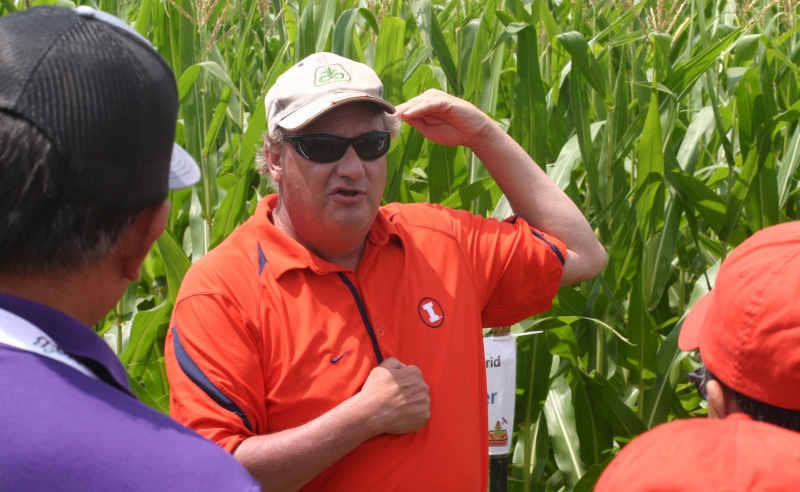
Entering the CornBox
Moose, a leading figure in corn research, invited attendees into the CornBox, a clever play on “sandbox,” Imagine a “playground” where digital agriculture innovations come to life in an actual cornfield. This unique environment tests advancements in genetics, sensor technology, and computing, all in real-time. The project aims to develop pioneering tools that enable communication with plants and their microbial partners.
The cornerstone of Moose’s work is the digitization of the G x E x M model—Genotype, Environment, and Management. Here’s a glimpse into how these elements intertwine to revolutionize corn production:
Genetics (G): In the corn box, the genetic makeup of the plants is meticulously sequenced. “From DNA to RNA, every genetic detail is digitized, enabling precise tracking and analysis of plant traits. This foundational data is crucial for developing resilient and high-yielding corn varieties,” Moose says.
Environment (E): For over two decades, the team has been collecting environmental data using weather stations and soil sensors. These sensors measure moisture and temperature at depths of 5, 15, and 30 centimeters, transmitting hourly updates via wireless boosters powered by solar panels. This comprehensive environmental monitoring allows researchers to understand how different conditions impact crop growth and to predict trends both seasonally and long-term.
Management (M): Nitrogen management is a key focus in the corn box, Moose says. By comparing corn grown with and without fertilizer, the team gains insights into soil fertility and nutrient cycles. Adjacent fields are rotated between corn and soybeans, with soybeans enriching the soil for the next corn crop. This rotation helps maintain soil health and uniformity, essential for sustainable farming.
Technological Integration: Satellite technology plays a vital role in this research. With daily satellite passes providing detailed imagery, researchers can analyze plot-level data, even on cloudy days. Advanced satellite triangulation offers high-resolution images, allowing for precise monitoring of crop conditions and variances.
This meticulous integration of genetics, environment, and management is part of the NSF-supported Center for Research on Programmable Plant Systems (CROPPS). This project aims to merge digital biology with the Internet of Things, creating an interconnected network of sensors, models, and computational tools.
“Essentially, it’s about turning plants into programmable entities that can adapt and thrive in varying conditions,” Moose says.
One of the intriguing aspects of the CornBox is its experimental nature, which extends beyond the fields into the realm of business and communication. Enter Cabral Bigman-Galimore, a communications expert at the University of Illinois. She explores how early-stage research on programmable plants can be effectively communicated and applied in real-world scenarios, and solicited feedback from the attendees.
“What comes to mind when you think of programmable plants? If you could program a plant, what would you want it to do?” she asked, encouraging creative thinking and broadening the scope of this revolutionary research.


